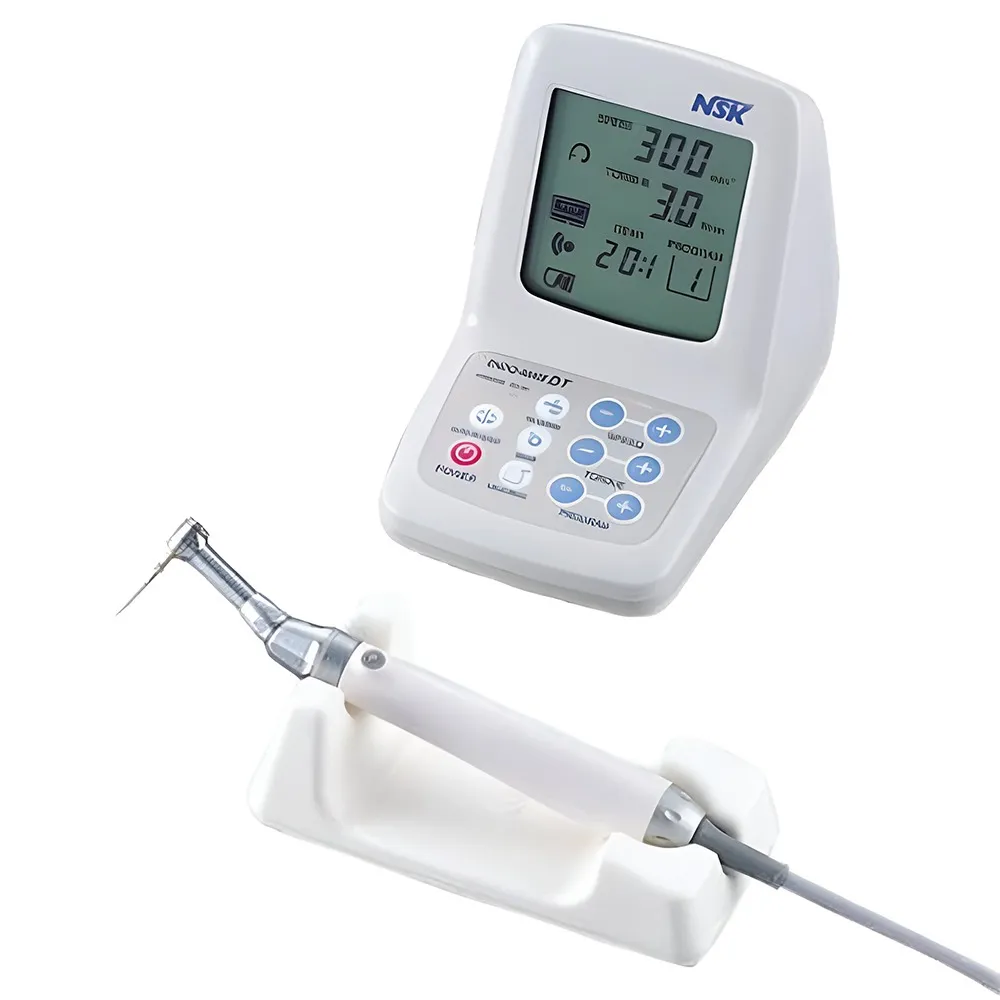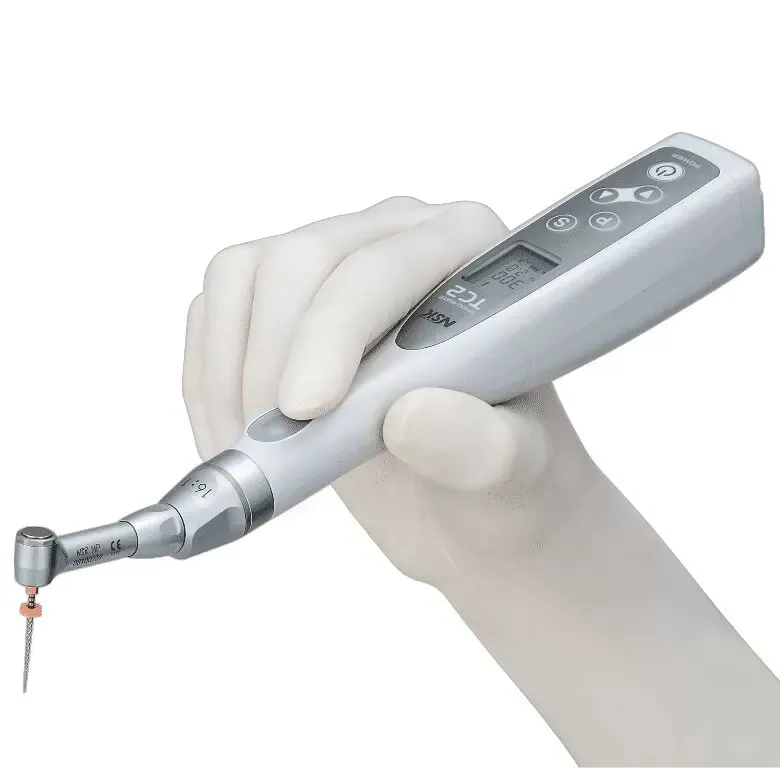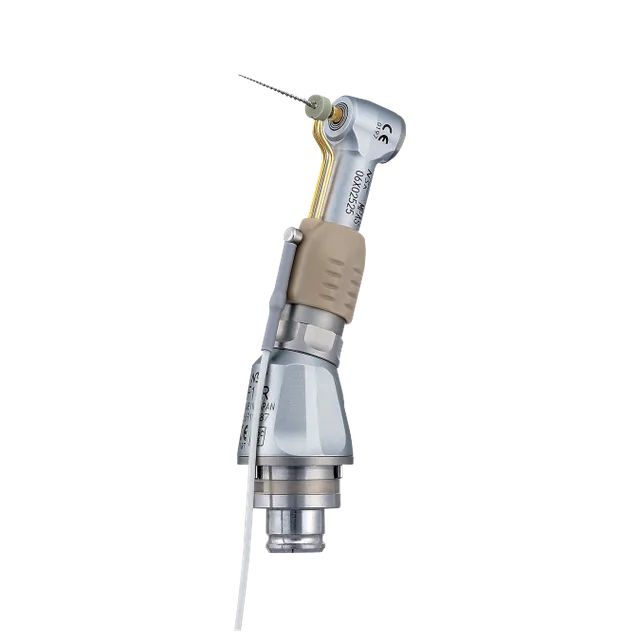Numerous advancements have taken place in every field of dentistry. There has been a need for high level of precision regarding endodontic treatment and the traditional methods of hand instrumentation have been time consuming and highly technique sensitive. The speed and efficiency of treatment had to be improved in order to ensure faster and more efficient treatment. Automated mechanical systems have been developed to aid in preparation of the root canal space. This has greatly improved the efficiency or root canal preparation in addition to saving a lot of time for both, the patient and the dentist. Rotary shaping instruments are hence replacing the conventional hand files systems. They also reduce the chances of clinical mishaps such as ledges, blocks, perforations and transportations.
What are the generations of Endomotors?
Endomotors have been improved over the years resulting in 4 generations of endodontic motors for use in root canal therapy.
- 1st generation endomotors - without torque control
- 2nd generation endomotors - with torque limiter
- 3rd generation endomotors - with simple torque control
- 4th generation endomotors - with apex locator and torque control
HISTORY OF ENDOMOTOR
The first description of rotary instrument use in endodontics was done by Oltramare in the year 1889. The first endodontic handpiece was developed by William. H. Rollins, to aid in automated preparation of the root canal. Specially designed needles were used by Rollins, which were mounted into the dental handpiece with a 360-degree rotation. The speed of the instrument was limited to 100 rpm to avoid fractures of the rotary instrument.
What are the different types of handpieces used in endodontics?
Instruments under the ISO Groups II and III include engine driven, ultrasonic and slow speed electric motors. These engine driven instruments can be used with three different types of handpieces:
- Rotary handpiece
- Reciprocating handpiece
- Vertical Stroke handpiece
Handpieces are devices to hold the rotating instruments, transmitting power to them and aid in their intra oral positioning. Gear systems can be incorporated into the handpieces which allow the operator to modify the speed and torque of the device. The gear system is located in the shank of the handpiece. A modified ball race bearing is the basic design of a gear system.
Endodontic handpieces usually have a 10:1 or a 16:1 gear ratio.
Importance of Speed and Torque:
Speed and torque are important parameters when dealing with electric or air driven rotary handpieces.
Speed of the handpiece is expressed in revolution per minute (rpm). It also refers to the surface feet per unit that the tool works in order to cut. The usual speeds used in endodontics range from 150 to 40,000 rpm. Althoughave higher cutting efficiency, they have the following disadvantages such as, loss of tactice sensation, instrument fracture, change in the canal curvature and loss of control over the instrument. higher speeds h
Torque is the ability of the handpiece to withstand pressure laterally without a reduction in speed or cutting efficiency. The type of bearing used and the amount of energy supplied to the handpiece play a major role in determining torque.
Key elements of a rotary endodontic system:
The following are key elements incorporated into a rotary endodontic system:
- Torque-sensing - determines the twisting force on the file
- Auto-reversing - reverses the rotation of the file if torque limit is exceeded
- Constant file rotational speed
The above elements reduce the chances of file breakage inside the canal. Torque and speed control allows the dentist to adjust the feel of the endodontic unit.
What are the brands selling Endomotors online in India?
Bestodent
Dentsply
J-Morita
Marathon
Micro-Mega
NSK
Saeshin
Sybron-Endo
W&H
Woodpecker are a few of the many endomotors that are available online at PinkBlue.in
Other categories of NSK:
TURBINES
- RESTORATIVE & PROSTHETICS
- Ti-Max Z
- Ti-Max X450L
- DynaLED
- S-Max pico
- Pana-Max PLUS
- Pana-Max2
CONTRA-ANGLES
- RESTORATIVE & PROSTHETICS
- Ti-Max Z
- Ti-Max Z45L
- nano series
- FX Series
- FXm Series
- FX57
- EX Series
CLINICAL MICROMOTORS
- NLX nano
- M40 XS
- AIR MOTORS
MOBILE DENTISTRY
- MOBILE DENTISTRY
- Dentalone
- VIVA ace
ORAL HYGIENE
- ORAL HYGIENE
- Varios Combi Pro
- Varios series
- Varios 970
- TIP GUIDE (Ultrasonic scaler)
- Ti-Max S970
- TIP GUIDE (Air scaler)
- Subgingival Air Polishing
- Perio-Mate / Prophy-Mate neo
- Powder Therapy Guide
ENDODONTICS
- ENDODONTICS
- ENDO-MATE DT
- ENDO-MATE TC2
- iPexII
SURGICAL
- SURGICAL
- VarioSurg
- TIP GUIDE (Ultrasonic Bone Surgery)
- iSD900
- Ti-Max Z-SG45
- Ti-Max X surgical handpieces
- SGR2-E, SGO2-E, SGT2-E
LABORATORY
- LABORATORY
- ULTIMATE XL
- VOLVERE i7
- PRESTO AQUA LUX
Why buy NSK endomotors from Dentalkart.com?
- The best endomotors can be found at Dentalkart.com. Care has been taken to ensure that all products listed on the website are 100% genuine and are of high quality. Buying NSK endomotors online at Dentalkart.com can be highly beneficial to the customers as they are available at lowest prices in India. Various modes of payment such as Credit Card, Debit Card, Cash on Delivery, Net Banking, Paytm are available to suit the needs of various dentists. With free delivery on orders more than Rs.2500, all orders are ensured prompt delivery.


















